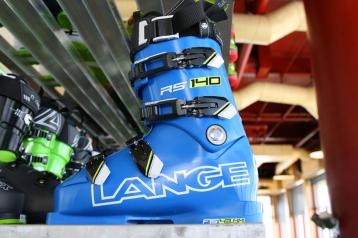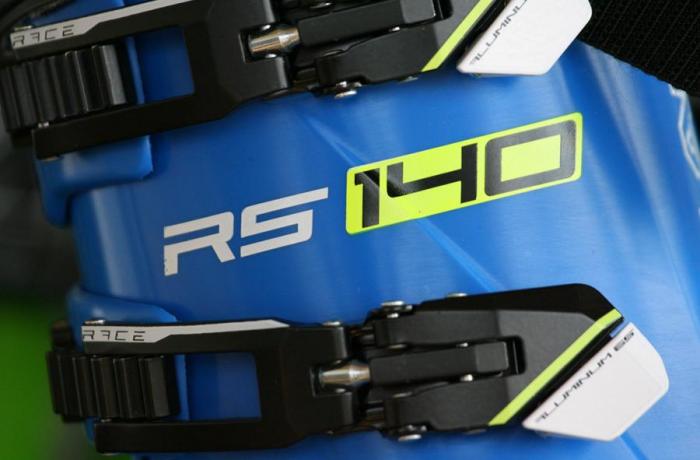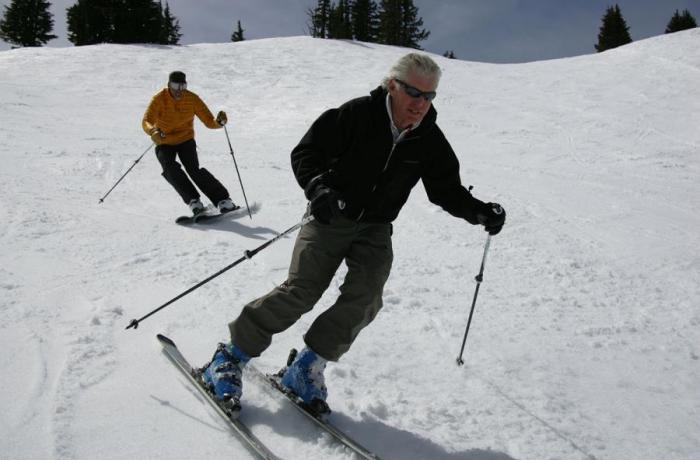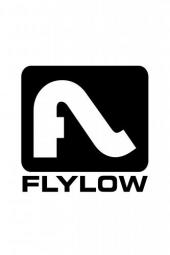Boo! Did that 140 flex indicator scare you? Don’t let it. It's probably exactly where you want to be stiffness-wise in this high-powered category. According to our testers, the boot is a mere half-click stiffer than Lange’s former test champ, the RS 130. So why go for the RS 140 at fifty extra bucks? The lace-up liner.
For those who weren't spawned of race programs or haven't been sucked into the masters racing maelstrom (a lot like an expensive powerboat habit), the lace-up liner is the shiznit for true World Cup plug-style race boots. The liner goes on the foot and is laced up outside the shell. Then foot and liner slide into the shell. It makes for a painted-on fit and feel.
Why do this? In true plug boots it’s because that's about the only way to get them on without the thin liners crumpling down into the stiff shells. In the RS 140? Well, because it's awesome. Testers liked the way the supple faux leather wrapped the foot and lower leg like a fitted sock. They appreciated how the inner boot tension was tuned by something as elegantly simple as laces—no Boa, no speed lace gizmo. Just snug it, tie it and go (well, cram into the liner first and then go).
If the concept is simple, the liner's construction is decidedly not. It replaces the standard cork flow-pack (chipped cork in an oozable oil, contained within the general ankle pocket area and notoriously slow to mold) with Lange’s anatomically pre-molded anatomical ankle pads and an ingenious perforated construction over the top of the foot to create better initial fit with ongoing auto molding.
The rest of the tester-acclaimed RS 140 package mirrors the award-winning RS 130—minus the 10 flex index points. The mono-injected polyether shell is well-sculpted to match anatomical contours, but the material itself is geared toward race-room style shell mods. Whether it be punches, grinds or boot sole planing for cant, the boot is engineered to be worked on to wring maximum performance. Not that most skiers would need much shell work in this 97mm width—it topped the category for out-of-box comfort.
We haven't much mentioned the RS 140's performance scores—we just assumed that since it's a half-step away and slightly better than its closest sibling RS 130 (which hasn't changed in about four years and hasn't left our frontside test podium) that you already knew about those qualities. But for those unfamiliar with the Lange family blue boot line dominance, testers thought the RS 140 was one of the very best we tried—everywhere on the hill, even though its forte is smooth, firm surfaces.
It was tested in a field of other great boots and was firmly in the top three there (the other two were the Head Raptor 130 RS and the Tecnica R9.8 130). Its solid sole construction and rigid boot board are really what make it piste centric. It’s transmissive to a fault and sometimes that means harsh feedback from choppy surfaces. For skiers seeking close-to RS 140 or 130 performance but with better off-trail management skills, see the RX 130 LV we tested in the All-Mountain Traditionalist category.













Kudos
Caveats